31 Benefits Of Prickly Pear Fruit For Skin, Hair & Health
Harness the advantages of consuming this fruit to maintain hair, skin, and overall health.
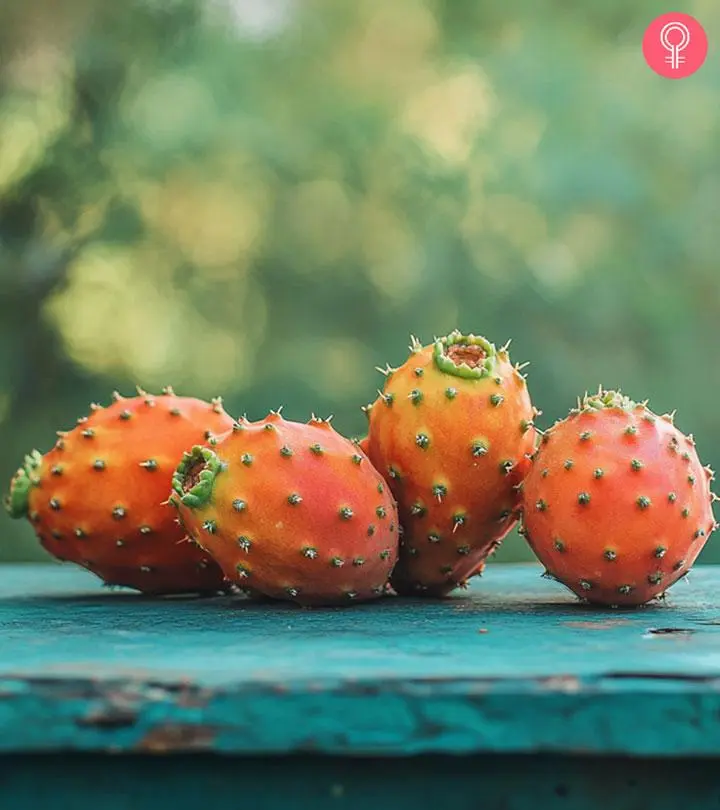
Image: Midjourney/ StyleCraze Design Team
Prickly pear benefits your health in multiple ways, which include treating a hangover and aiding in weight loss. This fruit from the cactus family is delicious and nutrient-rich. It is native to Mexico and has a rich cultural history. This fruit was held in high esteem by prehistoric societies like the Aztecs, who valued it for its adaptability and use in traditional medicines and diets. While many people avoid it because of its intimidating appearance, it positively impacts your overall health.

In this article, we will discuss the history of prickly pear, its nutritional profile, its benefits for skin, hair, and health, how to add it to your diet, and its potential side effects. Keep reading!
 Know Your Ingredient: Prickly Pear
Know Your Ingredient: Prickly PearWhat Is It?
A light green, red, or orange fruit with small thorns on the surface and dark red pulp that tastes like kiwi or melon.
What Are Its Benefits?
It reduces hair loss, aids in weight loss, brightens skin tone, and treats hangovers.
Who Can Use It?
Anybody can consume it except people on diabetes medications.
How Often?
You can consume 2 to 3 prickly pears every day.
Caution
Overconsumption may result in bloating, diarrhea, nasal inflammation, and headache.
In This Article
What Is Prickly Pear?
Prickly pear is a fruit that grows on the leaves of the Nopales cacti, belonging to the genus Opuntia, its scientific name is Opuntia ficus-indica. It is also referred to as Nagfani in Hindi, Nagajemudu in Telugu, Kallimullpazham in Malayalam, and Dindla in Gujarati. The younger plants are edible and often part of the Mexican diet. The other edible parts of the prickly pear cactus are the flowers, stems, and the leaves.
Widely known as “cactus pear”, prickly pear by different names in different countries and regions like Tuna, Nopal, Nopales, Barberry figs, Indian figs. Prickly pear is a cylindrical fruit that has a firm outer skin with barbs and softer inner flesh, which is edible. It is green initially and turns reddish-pink as it matures in most plants (1). It can be eaten raw, boiled, or grilled. It is also used to make juice and jams. These tasty, oval fruits sprout from the tops of prickly cactus leaves and range in various colors from deep red-green to yellow or purple. Its taste is similar to watermelon/raspberries and it has a cucumber-like fragrance.
When it comes to the fruit’s taste, some people really love it while others don’t. Tricia D. Walker, an ecologist and nature connection facilitator, tried freshly picked prickly pear fruits during a picnic and her honest review of the fruit is that it tastes average. She states in her blog, “They weren’t very sweet and were full of hard seeds which were too small to spit out but too big to enjoy eating (i).” She further adds that she would only eat them again if she were starving.
 Did You Know?
Did You Know?Key Takeaways
- People struggling with heart disease and obesity should include prickly pear in their diet, for its low cholesterol and saturated fat content.
- The fruit also reduces hunger pangs, as it contains fiber that keep your hunger satiated for longer.
- Prickly pear can help alleviate hypertension with its high potassium content.
- Prickly pear contains antioxidants that can reduce oxidative stress on the liver. So, drinking its juice or eating it in jelly-form can restrict liver damage.
What Is The History Of Prickly Pear?
Being a cactus, the prickly pear plant can survive in dry weather conditions. It is said to have originated in Mexico and the northern countries of South America, which fall under the arid to semi-arid climate categories. In these regions, it has been a diet staple for thousands of years. It was later found to be used in the Middle East and Indian subcontinent as well.
With increasing popularity, prickly pear cacti are now cultivated in Europe and Australia too. The fruit is relished not just for its flavor but also for its health benefits. Its anti-inflammatory, antioxidant, and anti-aging properties have made this thorny fruit popular.
So, why are these fruits food for you?
Why Are Prickly Pears Good For You?
Prickly pear is rich in many nutrients, vitamins, minerals, and dietary fiber.
These make it a wonderful and healthy addition to your diet for both culinary and medicinal purposes. Their low cholesterol and saturated fat content make them a suitable option for many people across the globe who are suffering from obesity and heart disease. These versatile fruits are not a hassle to cut or prepare. If you have access to them, go ahead and purchase a few.
Let us look at this fruit’s nutrition facts now.
Prickly Pears Nutrition Facts
When we talk about the nutritional value of prickly pear, it contains magnesium, amino acids, antioxidants, vitamins C and B, beta-carotene, iron, calcium, potassium, and many other nutrients. Having one cup of this fruit can be a good source of a considerable part of the daily intake value of many vitamins and minerals. Bear in mind that the calcium found in this traditional desert plant may not be present in its biologically active form. It is present in the form of a non-absorbable complex (calcium oxalate).
Nutrition Facts Serving Size 149g | ||
|---|---|---|
| Amount Per Serving | ||
| Calories 61 | Calories from Fat 6 | |
| % Daily Value* | ||
| Total Fat1g | 1% | |
| Saturated Fat 0g | 0% | |
| Trans Fat | ||
| Cholesterol 0mg | 0% | |
| Sodium 7mg | 0mg | |
| Total Carbohydrate 14g | 5% | |
| Dietary Fiber 5g | 21% | |
| Sugars | ||
| Protein 1g | ||
| Vitamin A | 1% | |
| Vitamin C | 35% | |
| Calcium | 8% | |
| Iron | 2% | |
Vitamins Amounts Per Selected Serving %DV | ||
| Vitamin A | 64.1IU | 1% |
| Vitamin C | 20.9mg | 35% |
| Vitamin D | – | – |
| Vitamin E (Alpha Tocopherol) | – | – |
| Vitamin K | – | – |
| Thiamin | 0.0mg | 1% |
| Riboflavin | 0.1mg | 5% |
| Niacin | 0.7mg | 3% |
| Vitamin B6 | 0.1mg | 4% |
| Folate | 8.9mcg | 2% |
| Vitamin B12 | 0.0mcg | 0% |
| Pantothenic Acid | – | – |
| Choline | – | |
| Betaine | – | |
| Vitamin C | 35% | |
| Minerals | ||
| Amounts Per Selected Serving | %DV | |
| Calcium | 83.4mg | 8% |
| Iron | 0.4mg | 2% |
| Magnesium | 127mg | 32% |
| Phosphorus | 35.8mg | 4% |
| Potassium | 328mg | 9% |
| Sodium | 7.5mg | 0% |
| Zinc | 0.2mg | 1% |
| Copper | 0.1mg | 6% |
| Manganese | – | – |
| Selenium | 0.9mcg | 1% |
| Fluoride | – | – |
| Fats & Fatty Acids | ||
| Amounts Per Selected Serving | %DV | |
| Total Fat | 0.8g | 1% |
| Saturated Fat | 0.1g | 0% |
| Monounsaturated Fat | 0.1g | |
| Polyunsaturated Fat | 0.3g | |
| Total trans fatty acids | – | |
| Total trans-monoenoic fatty acids | – | |
| Total trans-polyenoic fatty acids | – | |
| Total Omega-3 fatty acids | 34.3mg | |
| Total Omega-6 fatty acids | 277mg | |
The amount of vitamin C present in one cup of prickly pear constitutes 35% of our daily value intake, whereas magnesium constitutes 32% of the DV. It is also rich in omega-3 and omega-6 fatty acids, which are the healthy forms of fats that possess anti-inflammatory properties.
Now that we have a brief understanding of the nutrients found in prickly pear cactus fruit, let us look at what the presence of these nutrients implies. The many health benefits of this fruit are discussed below.
What Are The Health Benefits Of Prickly Pear Cactus?
Some of prickly pear’s health benefits include its ability to lower cholesterol levels, aid in weight loss, improve the digestive process, fight cancer cells, decrease the risk of diabetes, boost the immune system and reduce the risk of Alzheimer’s. Read on to know more.
1. Potential Role In Weight Control

Obesity is a global epidemic and needs to be managed at the earliest. Instead of resorting to extreme measures like harmful medications or surgery, a simple solution to this problem could be consuming plenty of dietary fiber. Prickly pear fruit contains fiber that will make you feel full for longer and reduce hunger pangs. It also helps in the elimination of dietary fat by binding it and excreting it from the system. As the intestines do not get a chance to absorb the dietary fat, this fruit effectively helps in weight control and even weight loss (2).
2. Helps Lower Cholesterol
Continuing on the weight loss tangent, prickly pear can also help reduce the cholesterol levels in the blood. Its fiber (pectin) content can be held responsible for this as it helps eliminate LDL cholesterol from the body. Experiments have shown that prickly pear can reduce both plasma levels and hepatic levels of cholesterol (3, 4). Also, certain phytosterols found in cactus seed oil can alter cholesterol metabolism in a positive way (5). Hyperlipidemia, the condition of high cholesterol levels, can also be brought under control.
3. Source Of Essential Micronutrients
The essential micronutrients found in prickly pear are vitamin C, folate, vitamin B6, riboflavin, niacin, iron, magnesium, calcium, and potassium. Of these, the highest % DV is held by vitamin C and magnesium (6). Consumption of one cup of this fruit on a regular basis can provide your body with these micronutrients that are required for various physiological and metabolic processes.
4. Fights Cancer Cells
The flavonoid compounds in prickly pear lower the risk of breast, prostate, stomach, pancreatic, ovarian, cervical, and lung cancers. They were shown to inhibit the growth of cancer cells in the lab and mice models. They also caused the death of these cancerous cells at higher concentrations (7). These compounds also have the ability to remove free radicals and improve the activities of pro-oxidant enzymes.
5. Prevents Ulcers
Both physical and mental stress can cause changes in the gastrointestinal mucosa and result in gastric ulcers. Inflammation occurs as there is an increase in the pro-inflammatory compounds that damage the gastric wall. Prickly pear exerts a positive effect on the gastric mucosa, and this activity is mainly facilitated by a compound called betanin found in this fruit. The gastric mucus production is regulated, and there is also a reduction in the pro-inflammatory chemicals. As a result of this, the chances of developing ulcers are highly reduced by the consumption of prickly pear (8).
6. Blood Sugar Regulation
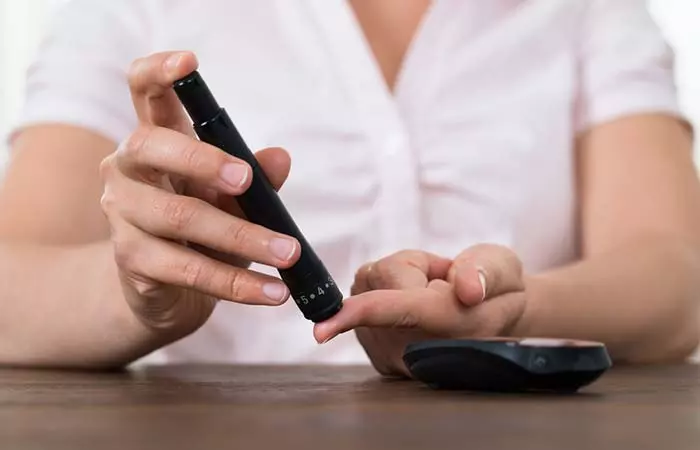
Cactus pear is often touted for its hypoglycemic activity. This means that the ingestion of this fruit or its extract can lower high blood glucose levels as well as maintain normal levels. Different experiments on both diabetic and antidiabetic rats have shown a decrease in blood glucose levels. The main mechanism of this reduction is a decrease in the intestinal absorption of glucose (9, 10). Prickly pear cactus fruit’s fiber and pectin content are considered responsible for this activity. Once the blood sugar levels are brought under control, type II diabetes can be managed easily.
7. Nopal Cactus Cleans The Colon
The high fiber content of prickly pear not only helps in lowering blood sugar/glucose and cholesterol levels but also helps in regulating the general functioning of the colon. Enough glucose is absorbed, and unhealthy fats and excess bile are eliminated from the body. This keeps the colon in optimum health. The inflammation and oxidative stressi A condition that can harm cells and tissues brought on by an imbalance between the body's antioxidants and free radicals. that the colon is being subjected to are also alleviated. The antioxidants present in prickly pear eliminate the free radicals and inflammation-inducing compounds, thus cleansing and protecting the colon (11).
8. Soothes The Stomach
In Mexico, prickly pear is commonly used as a dietary supplement. People consume prickly pear daily to regularize their bowel movements. This helps to maintain a healthy digestive system and prevents constipation. The anti-inflammatory and antioxidant properties of compounds found in cactus pear are also responsible for aiding stomach health and soothing it (12).
9. Protects The Liver
We often consume carcinogens and other compounds that can damage the liver without realizing the damage they can cause. Here’s a solution for better liver health. Consume prickly pear as a juice or in the form of jams or jellies to prevent liver damage. It contains plenty of antioxidants that can reduce the oxidative stress caused by such compounds on the liver. It exerts hepatoprotective activity that mainly involves eliminating free radicals and increasing the body’s antioxidant activity against these compounds (13).
10. Reduces Hangovers

This fruit has the ability to reduce the effects of a hangover. Prickly pear juice reduces the production of inflammatory mediators that induce the uncomfortable feeling during alcohol hangovers. It also reduces other symptoms like nausea and dry mouth (14).
11. Immune System Booster
The vitamin C content of prickly pear is responsible for this particular health benefit. Vitamin C boosts the body’s immune response against various infections. It increases the production of white blood cells that undertake the process of killing and eliminating infectious microorganisms from the body. Vitamin C also acts as an antioxidant and reduces the free radical damage throughout the body. This also gives the immune system a boost (15, 16).
12. Reduces Risk Of Colon Cancer
Prickly pear contains various types of antioxidants like flavonoids, quercetins, gallic acid, phenolic compounds, betacyanins, etc. The antioxidant activity of these was tested against colon cancer cell lines, and the viability of these cells was greatly affected by them (17). Quercetin, especially, plays a key role in the disruption of a certain pathway involved in the development of cancer cells (18).
13. Protects Against Heart Disease
The fiber content of prickly pear helps reduce cholesterol levels in the body and maintain blood pressure. Hence, hypertension and bad cholesterol are brought under control. These factors are associated with atherosclerosisi An accumulation of cholesterol, fats and other substances, collectively called plaque, in and on the artery walls. , coronary heart disease, and other heart diseases. Cactus fruit’s antioxidants also help to enhance cardiovascular health (19, 20). The biologically active flavonoids in prickly pears normalize the blood platelet stickiness, which helps to maintain good cardiovascular health (21). Hence, herbal doctors often recommend consuming prickly pear for heart health and alleviating cardiovascular disease.
14. Alleviates Hypertension (High Blood Pressure)
Prickly pear is rich in the mineral potassium. When ingested, this mineral can reduce the pressure on the blood vessels and lower the elevated blood pressure levels. Regular intake of prickly pear can maintain normal blood pressure levels and give relief from hypertension. The betalain found in this fruit also strengthens the inner walls of the blood vessels, further aiding in the promotion of cardiovascular health (22).
15. Osteoporosis Protection

This fruit is anti-inflammatory, antiviral, and antihistamine in nature. It also contains flavonoids that prevent the release of the compounds that help in inflammation of the joints and muscles caused due to gout, arthritis, exercise, fibromyalgiai A common disorder that results in widespread discomfort and pain in the muscles and joints, often accompanied by fatigue and stress. , and allergies. Osteoporosis, which is essentially an inflammatory disease, can be prevented and treated with prickly pear supplementation (23).
16. Stroke Prevention
A decrease in total body fat and elevated cholesterol, glucose, and blood pressure levels can all impact cardiovascular health in a very positive way. As these levels are reduced in the body, the risk of stroke or heart attack goes down (24, 25).
17. Reduces Frequency Of Migraine Headaches
Migraine is a chronic inflammatory condition that is characterized by the presence of a severe headache (usually on one side of the head) with disturbances in digestion and vision. And to alleviate this inflammation, anti-inflammatory compounds are needed. These are found in abundance in the prickly pear fruit, especially the compound indicaxanthin. This is technically a dietary pigment that can reduce various pro-inflammatory factors in the body (26). If consumed frequently, this fruit can help people deal with migraines. It also reduces their intensity and frequency.
18. Alleviates Premenstrual Syndrome (PMS)
Cramps, back pain, headaches, and breast tenderness are common symptoms that woman experience during PMS. Most of these symptoms are associated with an increase in the levels of prostaglandins (hormone-like chemicals) in the body. Prickly pear is known to inhibit the synthesis of prostaglandins, thus alleviating PMS symptoms (27).
19. Strengthens Bones And Teeth
Our teeth and bones are composed of calcium, and our diet is the only source of this mineral. The body obviously cannot synthesize calcium by itself. One cup of fresh prickly pear fruit contains 83 milligrams of calcium, which constitutes about 8% of the daily intake recommended by the FDA. This calcium intake will strengthen our bones and teeth (28).
20. Promotes Digestive Health

Fiber is an important part of our diet when it comes to digestive health. And prickly pear is loaded with fiber. This aids smooth digestion of various components of the food we eat and enhances the activity of the digestive enzymes. Additionally, the fiber from the fruit can help in the smooth elimination of wastes from the body (29).
21. Makes Your Nails Healthy
Prickly pear seed oil can be used to moisturize dry and damaged nails and restore the health of the nails and cuticles. It contains moisturizing fatty acids like linoleic acid, oleic acid, and palmitic acid. Small concentrations of other fatty acids are also found (30).
What Are The Benefits Of Prickly Pear For The Skin?
The seeds of this fruit are cold pressed to prepare a beauty oil. It possesses many properties that give it the following benefits:
22. Anti-Aging Properties
It contains skin-softening vitamins E and K. It also contains a good amount of skin hydrating and nourishing fatty acids. These prevent the formation of wrinkles and fine lines, thus making prickly pear oil a good anti-aging agent (30).
23. Anti-Inflammatory Agent
This xerophytic plant’s oil has great inflammation-fighting capabilities because of the presence of anti-inflammatory compounds. The betalains and phenolic compounds exert this effect when the oil is applied topically on the skin. Swelling and irritation due to insect bites, scrapes, or inflammatory skin conditions like psoriasis and dermatitis can be reduced by the application of this oil.
24. Brightens The Skin Tone
This oil is also often used for its skin brightening properties. Linoleic acid, which is a fatty acid, not only nourishes the skin but also eliminates dullness. It also protects the skin from UV radiation (31).
25. Helps Achieve Smoother Skin
It provides hydration to dull and dry skin. Linoleic, oleic, and palmitic fatty acids, which are found in major proportions in prickly pear seed oil, supply the skin with the oils it lacks.
26. Heals Cuts, Wounds, And Blemishes
Phenolic compounds are also found in good concentrations in prickly pear oil, which exert antioxidant effects on the skin and help repair damaged skin (32). Cut wounds, scars, and other blemishes that may have formed due to various reasons will start healing and fading over time. Apply this oil regularly to reap its healing benefits.
27. Reduces Dark Circles
Dark circles
under the eyes are formed due to many reasons. Lack of sleep, dehydration, and oxidative stress are the major factors that can cause your under eye area to become dull and get a bluish-purplish tinge. Prickly pear seed oil contains skin nourishing fatty acids that also possess skin brightening properties. In conjunction, these properties can help to lighten your dark circles.
All of these properties make prickly pear seed oil an excellent choice for mature, aging, and/or damaged skin.
Let us now look at the benefits of prickly pear for your hair.
How Does Prickly Pear Benefit Your Hair?
Both the fruit and the oil from its seeds can be used to smoothen hair texture, reduce hair fall, increase hair growth, and improve hair health overall.
28. Nourishes Hair
We already know that the oil from the seeds of this cactus fruit contains plenty of fatty acids, minerals, and vitamins that can benefit the skin. Similarly, these can also nourish the scalp and hair by providing the healthy oils they may be lacking. A special mention is required for prickly pear’s vitamin E content that can deeply condition the hair.
29. Makes Your Hair Shiny

You can use prickly pear oil to make your hair glossy. This oil can give you double the amount of fatty acids and protein than argan oil, which is a popular oil used for restoring the natural hair shine.
30. Reduces Hair Loss
The pulp of this fruit is often added to hair care products, as its antioxidants and anti-inflammatory compounds may provide relief from many scalp conditions and, in turn, reduce hair loss and stimulate hair growth.
31. Natural Hair Conditioner
Here’s a simple recipe to concoct your own hair conditioner at home using prickly pear cactus:
You Will Need
- 1-2 large nopal cactus pads
- 1/2 cucumber
- 2-3 tablespoons extra virgin coconut oil
- 1-2 tablespoons coconut milk (optional)
What You Have To Do
1. Wash the cactus carefully and peel it to remove all the thorns and barbs.
2. Dice this into small squares and add chopped cucumber to it.
3. Add the olive oil and coconut milk and blend everything.
4. Apply this on the scalp and hair.
5. Let it sit for 20-30 minutes and then rinse it off thoroughly. Make sure no residue remains in your hair.
This cactus pear hair mask will make your hair healthy, silky, and soft. It is also useful to protect your hair from the scorching sun and rejuvenate heat-damaged hair.
Those were the best benefits of prickly pear for your skin, hair and health. See the next section to know how to make prickly pear a wonderful addition to your diet.
How To Incorporate Prickly Pear Into Your Diet?
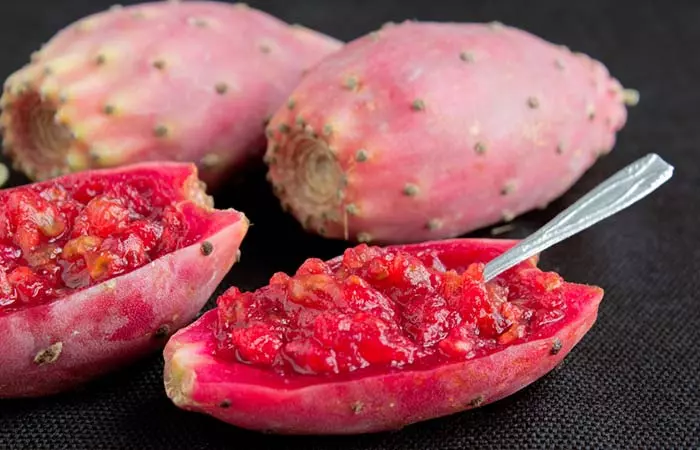
The prickly pear cactus plant has different parts that are edible. The pad of the cactus, which is often referred to as the nopal, is used as a vegetable in Mexican dishes. Its texture is similar to that of okra when cooked. It is boiled or grilled and is added to soups and salads mostly. Apart from the cactus pad, the fruit or the pear itself can be eaten. Like any other fruit, you can simply rinse it, peel it, and eat it fresh. The flowers of this plant are often used as garnishing or added to salads for extra flavor.
Eating the prickly pear fruit is not a difficult process. All you need to do is peel the skin and eat the fleshy pulp present inside. Jesse Feder, RDN, Clinical Dietitian at the Memorial Regional Hospital South says, “Prickly pears that you buy at the store will more than likely be rid of any thorns or needles that are naturally found on them. In this case, all you need to do is wash them and eat them.”
Be careful of the spines when you are handling the fruit initially and the seeds when you are eating it. Feder adds. “If you find a prickly pear in the wild, they are naturally filled with thorns and needles. These can easily become stuck in your skin, mouth, and stomach. This may cause bowel obstruction.”
He continues, “If you do not remove cactus needles they can become lodged and stuck in your skin. This can damage your skin as well as sensitive membranes around and within your mouth. If ingested, they can get stuck deep in tissues along your digestive tract. This can lead to perforations, infections, and other serious complications.”
He further adds, “Cactus needles can be partially digested within the body. However, they are usually tough and fibrous, allowing them to get lodged within your body and stay there. Even the thinner needles can cause damage to soft tissue. It is not recommended to try eating or consuming cactus needles.”
Many people also prepare jams and jellies from prickly pear fruit. If you do not have access to a store where you can purchase this fruit from, there are extracts available in the market. The dosage of these extracts would depend on the concentration, and it is best if the manufacturer’s recommendation is followed. Prickly pear water is also available in the market these days. This is prepared from the juice of the fruit and filtered water, along with some additional ingredients like lemon juice.
The fruit can be blended into juices, smoothies, or cocktails and mocktails for a refreshing, mildly sweet flavor. Its oil and extracts can be used to strengthen and hydrate hair, improving shine and reducing frizz.
Prickly pear is used in various forms to serve various purposes. These uses are given below.
Uses Of Prickly Pear Cactus
Here we discuss many various ways to use prickly pear. Check out what are they.
As A Supplement
Due to its benefits for lowering blood sugar levels, supplements for type 2 diabetes patients have been designed. The extract is also used to lower cholesterol, target obesity, and lower the risk of heart disease. This supplement is available usually in a powder or a pill form. People also use the supplement before drinking alcohol to reduce the symptoms of an alcoholic hangover.
Juice And Pulp
The juice or the pulp (without seeds) of the prickly pear fruit is extracted to make jams and jellies. The juice, by itself, can be very tart. It is often added to lemonade or margaritas for that extra zing. To reduce the tartness and still benefit from this amazing xerophyte, jams and jellies are prepared.
Medicinal Uses
When it comes to usage in medicine, prickly pear is used in medications for:
- Type 2 diabetes
- High cholesterol
- Obesity
- Alcohol hangover
- Heart disease
- Colitis
- Diarrhea
- Viral infections
- Benign prostatic hypertrophy (BPH) (33)
 Trivia
TriviaNow that we covered the many uses of this fruit, it is also important to know how to select the best fruit and store it so that you can derive the maximum benefits. Read on to know how.
How To Select And Store Cactus Pear
Mid-August is considered the best time to harvest prickly pear cactus fruit. Once you have located a plant, follow these steps:
- Using a pair of tongs, gently pluck the fruit from the cactus pad. It should come off easily. Beware of the spines on the nopales and also the glochids (microscopic spines) on the fruit. Using gardening or leather
- gloves can help prevent any spines from piercing your skin.
- Transfer the fruits to a large, clean bowl or bucket. Make sure to leave at least one fruit per cactus pad so that your harvesting does not interfere with the plants’ reproduction process.
- Pick fruits that are ruby colored (or other colors seen in prickly pear). Do not pick the ones that are still green at the ends.
- Rinse the fruits with water thoroughly. Swirl them around gently while doing this to get rid of the spines.
Cactus pear fruits remain ripe for about a week. They can also be refrigerated for 3-4 days in a plastic bag.
Here is how you can cut and prepare prickly pear fruit.
How To Eat Prickly Pear Cactus
- Rinse the fruit thoroughly in a colander using cold water. Keep swirling it around gently while doing this to get rid of the all the spines.
- Once all the spines have been removed, gently pat the fruit dry using a soft napkin.
- Take a sharp knife and cut the top and bottom parts of the fruit and discard them.
- Cut lengthwise to peel off the skin, similar to how you would peel an orange with a knife.
- Chop or slice the fruit, as per your preference, and eat it. Though the seeds are safe to ingest, many people prefer not to as they are too hard.
If you are still confused about how to consume this exotic fruit, we have some simple but delicious recipes for you below.
Any Prickly Pear Recipes?
1. Prickly Pear Lemonade

You Will Need
- 1 prickly pear
- 2 tablespoons lemon juice
- 1 cup water
- 1/2 tablespoon sugar
- 5-6 ice cubes
- Mint leaves for garnishing
Recipe
- Add the sugar and lemon juice to water and mix well.
- Cut the prickly pear in half and remove the pulp present inside. Add this to the lemonade.
- Blend all of these for 15-30 seconds.
- Strain the mixture to remove the seeds.
- Add ice cubes and drink this refreshing lemonade with a twist.
2. Prickly Pear Salad
You Will Need
- 2 cups fresh greens (Spinach or mixed salad greens)
- 1 prickly pear, peeled and diced
- 1/4 cup sliced cucumber
- 1/4 cup cherry tomatoes
- 1/4 cup crumbled feta cheese
- 2 tablespoons toasted pine nuts
- Salt and pepper to taste
For The Vinaigrette Dressing:
- 1/2 teaspoon Dijon mustard
- 2 tablespoons olive oil
- 1 teaspoon honey
- 1 tablespoon fresh lemon juice
- Salt and pepper to taste
Recipe
- Mix the sliced prickly pear, cherry tomatoes, cucumber, crumbled feta cheese, and fresh greens in a large salad bowl.
- To create the vinaigrette, add the olive oil, lemon juice, honey, Dijon mustard, salt, and pepper in a small bowl and whisk until thoroughly combined.
- Pour the vinaigrette over the salad and toss gently to coat each ingredient equally.
- For an extra crunch, sprinkle some toasted pine nuts on top.
3. Prickly Pear Puree
You Will Need
Prickly pear
Recipe
- Rinse and peel the fruit. De-seed it.
- Squash the flesh thoroughly for a couple of minutes until you get a smooth puree.
- Store this in an airtight container in the refrigerator.
4. Prickly Pear Ice Cream
You Will Need
- 1 cup prickly pear juice
- 1/8 cup lemon juice
- 1 quart half and half
- 1 teaspoon sea salt
- 2 cups sugar
- 1 teaspoon tangerine zest
- A pinch of lemon zest
Recipe
- Combine all the ingredients and pour into an ice cream maker.
- Let it run for about 20 minutes.
- Freeze the ice cream overnight or for at least six hours.
Those were the yummy recipes of this fruit. Now, let’s see where you can buy these delectable fruits.
Where To Buy Prickly Pear Cactus Fruit?
Prickly pears can be easily found in regular grocery stores. If you cannot find them there, try the Mexican or Middle Eastern vegetable markets.
Let me now summarize some key facts about prickly pear for you.
What Are The Facts About Prickly Pear I Need To Know?
- Prickly pear is also known as the nopal cactus and has flat, oval green leaves called pads, which are covered in spines.
- The fruits arise from the top of the cactus pads and are edible.
- This fruit, which is also called as the cactus pear, cactus fig or tuna, is usually red.
- Prickly pear is rich in vitamin C, magnesium, and omega fatty acids. It contains zero cholesterol.
- Even the pads of this plant are edible. They are commonly used in soups and salads.
- The fruits can be ingested by themselves or in the form of juice, jams, jellies, and even candy.
- Cactus fig is beneficial for the treatment of many ailments like high cholesterol, obesity, hypertension, heart disease, and stomach issues.
Even though this fruit has plenty of benefits, it can, at times, cause reactions in a few people. Here are the side effects experienced.
Side Effects Of Prickly Pear Cactus
- Upset stomach, diarrhea, bloating, and headache are the most common side effects noticed (34).
- Nasal inflammation or asthma can be caused due to an allergy to it.
- Eating broiled nopal stem can have an extreme hypoglycemic effect. This is not seen when raw stems or ripe fruit are eaten.
- It can interfere with the body’s ability to absorb certain medications due to its diuretic properties.
- Pregnant or women who are breastfeeding should not intake prickly pear in any form as it can interfere with the fetus’ or child’s development.
- While prickly pear is generally well-tolerated, some individuals may experience allergic reactions (35). These responses may trigger symptoms, including itching, swelling, and redness at the point of contact.
Infographic: Top Health Benefits Of Prickly Pear
Prickly pear has impressive health benefits like better immune support and skin health. Though there are many benefits of prickly pear, you must be aware of some key health benefits of this fruit before you eat it. Click on the infographic below to learn about the top health benefits of prickly pear.
Some thing wrong with infographic shortcode. please verify shortcode syntaxPrickly pear or nopal cactus is a red spiny fruit from the cactus family. It is loaded with antioxidants, electrolytes, minerals, and vitamins. Prickly pear’s benefits include regulated cholesterol levels, better immunity, weight loss, improved digestion, and possible protection against diabetes and Alzheimer’s disease. It may also help with the detoxification of the colon and strengthen bones and teeth. You can consume prickly pear juice, pulp, or supplements to reap its benefits. However, excess consumption may cause diarrhea, bloating, or lower your blood sugar levels way too much. Since the safety standards have not been determined yet, pregnant and breastfeeding women should consult a doctor before consuming it.
Frequently Asked Questions
What can reduce the skin irritation caused by prickly pear contact?
The spines (glochids) present on prickly pear can come in contact with the skin and at times, cause allergic reactions such as hives. These usually subside within an hour or so. If the spines have pierced the skin, carefully pluck them using tweezers or cellophane tape. To reduce the itching and irritation, you can use over-the-counter steroids or antihistamines.
Does prickly pear/tuna increase hemoglobin? Is it safe to consume?
Prickly pear has been known to increase hemoglobin. However, there is no clinical proof for this. However, it is absolutely safe to consume. So, go ahead and try it.
Does prickly pear cause constipation?
Prickly pear is often used to relieve constipation because of its fiber content. Irrespective of this, excessive intake can actually cause constipation because of the high amount of fiber blocking the intestines. Hence, it is best to consume it in moderate amounts.
How to prune prickly pear cactus?
Pruning is best done in spring or late summer to remove damaged, poorly formed, or excessive cactus pads. Using protective hand gear and clothing, carefully trim the pads at their bases. It might be best to cut off some of the top parts of the pads first to get better access to the base. If you are unsure about pruning the plant yourself or the cactus has grown out too much, get professional help.
Are all prickly pear cactus edible? What kind of cactus is edible?
The genus Opuntia consists of different species of cacti that are edible, especially Opuntia ficus indica or prickly pear. You can eat the fruits and also the flat stems by juicing them as this cactus juice benefits your health in so many ways. You can identify these plants by their oval, flattened, green, and spine-covered pads.
How many calories are in cactus pears?
One cup of cactus pear contains around 61 calories.
Is a cactus a fruit or a vegetable?
The prickly pear cactus is one of those plants that is a vegetable and a fruit. The green pads are the vegetable whereas the red pear is the fruit.
Is prickly pear good for the kidneys?
Animal studies suggest that consuming prickly pear peels may help reduce liver and kidney damage (38). However, clinical studies need to be done to understand the association of prickly pear with liver and kidney health.
Is prickly pear poisonous?
No, while prickly pears are not considered poisonous, remove the pointed thorns while preparing the fruit to avoid any injury.
Have you ever tried prickly pear fruit? Or have you had a chance to have one of those delicious Mexican dishes with the cactus pads in it? Share your experience with us in the comments section. Stay healthy!
Illustration: Benefits Of Prickly Pear Fruit For Skin, Hair & Health
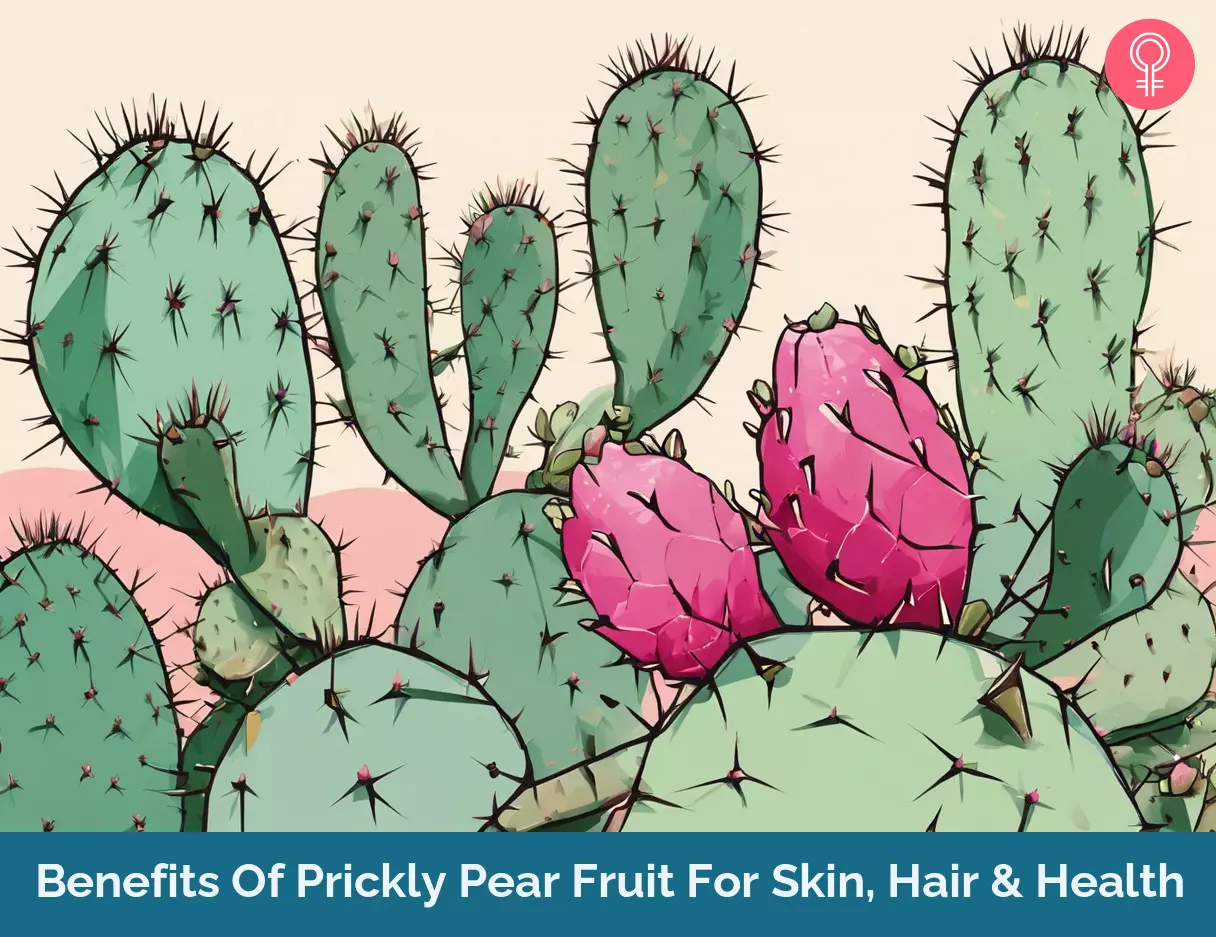
Image: Stable Diffusion/StyleCraze Design Team
Discover the amazing health benefits and nutrient facts of prickly pear fruit! Check out this video to learn how this delicious fruit can help improve your health and well-being.
Personal Experience: Source
StyleCraze's articles are interwoven with authentic personal narratives that provide depth and resonance to our content. Below are the sources of the personal accounts referenced in this article.
i. Foraging prickly pearhttps://www.littleecofootprints.com/2012/07/foraging-prickly-pear.html
References
Articles on StyleCraze are backed by verified information from peer-reviewed and academic research papers, reputed organizations, research institutions, and medical associations to ensure accuracy and relevance. Read our editorial policy to learn more.
- Bioactive Compounds ofOpuntia spp. Acid Fruits: Micro and Nano-Emulsified Extracts and Applications in Nutraceutical Foods
https://pmc.ncbi.nlm.nih.gov/articles/PMC8587638/ - Effects of Cactus Fiber on the Excretion of Dietary Fat in Healthy Subjects: A Double Blind Randomized Placebo-Controlled Crossover Clinical Investigation
https://pmc.ncbi.nlm.nih.gov/articles/PMC4109417/ - Prickly pear (Opuntia sp.) pectin alters hepatic cholesterol metabolism without affecting cholesterol absorption in guinea pigs fed a hypercholesterolemic diet
https://pubmed.ncbi.nlm.nih.gov/8207539/ - The effect of cactus pear (Opuntia ficus-indica) on body weight and cardiovascular risk factors: a systematic review and meta-analysis of randomized clinical trials
https://pubmed.ncbi.nlm.nih.gov/25837206/ - Biological activities of Schottenol and Spinasterol two natural phytosterols present in argan oil and in cactus pear seed oil on murine miroglial BV2 cells
https://pubmed.ncbi.nlm.nih.gov/24582563/ - Prickly pears raw
https://fdc.nal.usda.gov/food-details/167750/nutrients - Cactus pear: a natural product in cancer chemoprevention
https://pmc.ncbi.nlm.nih.gov/articles/PMC1242252/ - Prickly Pear Cactus (Opuntia ficus indica var. saboten) Protects Against Stress-Induced Acute Gastric Lesions in Rats
https://pmc.ncbi.nlm.nih.gov/articles/PMC3491621/ - Evaluation of antidiabetic properties of cactus pear seed oil in rats
https://pubmed.ncbi.nlm.nih.gov/25026333/ - A purified extract from prickly pear cactus (Opuntia fuliginosa) controls experimentally induced diabetes in rats
https://pubmed.ncbi.nlm.nih.gov/9121164/ - Nopal feeding reduces adiposity intestinal inflammation and shifts the cecal microbiota and metabolism in high-fat fed rats
https://pmc.ncbi.nlm.nih.gov/articles/PMC5308786/ - Risks and Benefits of Commonly used Herbal Medicines in México
https://pmc.ncbi.nlm.nih.gov/articles/PMC2322858/ - Review of natural products with hepatoprotective effects
https://pmc.ncbi.nlm.nih.gov/articles/PMC4209543/ - Effect of Opuntia ficus indica on symptoms of the alcohol hangover
https://pubmed.ncbi.nlm.nih.gov/15226168/ - Vitamin C and Infections
https://pmc.ncbi.nlm.nih.gov/articles/PMC5409678/ - Vitamin C and immune function
https://pubmed.ncbi.nlm.nih.gov/19263912/ - Phenolic composition antioxidant capacity and in vitro cancer cell cytotoxicity of nine prickly pear (Opuntia spp.) juices
https://pubmed.ncbi.nlm.nih.gov/19468836/ - Gene-Diet Interactions on Colorectal Cancer Risk
https://pmc.ncbi.nlm.nih.gov/articles/PMC3873016/ - Effect of Opuntia humifusa Supplementation and Acute Exercise on Insulin Sensitivity and Associations with PPAR-γ and PGC-1α Protein Expression in Skeletal Muscle of Rats
https://pmc.ncbi.nlm.nih.gov/articles/PMC3645680/ - Effects of Prickly Pear Dried Leaves Artichoke Leaves Turmeric and Garlic Extracts and Their Combinations on Preventing Dyslipidemia in Rats
https://pmc.ncbi.nlm.nih.gov/articles/PMC3395130/ - Daily prickly pear consumption improves platelet function
https://pubmed.ncbi.nlm.nih.gov/12878452/ - The effect of cactus pear (Opuntia ficus-indica) on body weight and cardiovascular risk factors: A systematic review and meta-analysis of randomized clinical trials
https://www.researchgate.net/publication/269820898_The_effect_of_cactus_pear_Opuntia_ficus-indica_on_body_weight_and_cardiovascular_risk_factors_A_systematic_review_and_meta-analysis_of_randomized_clinical_trials - Chemical Analysis of Nutritional Content of Prickly Pads (Opuntia ficus indica) at Varied Ages in an Organic Harvest
https://pmc.ncbi.nlm.nih.gov/articles/PMC3108109/ - Impacting obesity and glycemic control using a culturally-sensitive diabetes education program in Hispanic patients with type 2 diabetes
https://pmc.ncbi.nlm.nih.gov/articles/PMC3036541/ - The effect of NeOpuntia on blood lipid parameters–risk factors for the metabolic syndrome (syndrome X)
https://pubmed.ncbi.nlm.nih.gov/18029338/ - Indicaxanthin from cactus pear fruit exerts anti-inflammatory effects in carrageenin-induced rat pleurisy
https://pubmed.ncbi.nlm.nih.gov/24306215/ - Supplementation with cactus pear (Opuntia ficus-indica) fruit decreases oxidative stress in healthy humans: a comparative study with vitamin C
https://pubmed.ncbi.nlm.nih.gov/15277160/ - Dietary Reference Intakes for Calcium and Vitamin D.
https://www.ncbi.nlm.nih.gov/books/NBK56060/ - Comparison of effects of prickly pear (Opuntia ficus indica sp) fruit arabic gum carrageenan alginic acid locust bean gum and citrus pectin on viscosity and in vitro …
https://www.academia.edu/11983416/Comparison_of_effects_of_prickly_pear_Opuntia_ficus_indica_sp_fruit_arabic_gum_carrageenan_alginic_acid_locust_bean_gum_and_citrus_pectin_on_viscosity_and_in_vitro_ - Nutritive value and chemical composition of prickly pear seeds (Opuntia ficus indica L.) growing in Turkey
https://pubmed.ncbi.nlm.nih.gov/21391790/ - The Role of Linoleic Acid in Skin and Hair Health: A Review
https://pmc.ncbi.nlm.nih.gov/articles/PMC11719646/ - Oil composition and characterisation of phenolic compounds of Opuntia ficus-indica seeds
https://pubmed.ncbi.nlm.nih.gov/23561175/ - Cactus flower extracts may prove beneficial in benign prostatic hyperplasia due to inhibition of 5alpha reductase activity aromatase activity and lipid peroxidation
https://pubmed.ncbi.nlm.nih.gov/9760000/ - Opuntia spp. in Human Health: A Comprehensive Summary on Its Pharmacological Therapeutic and Preventive Properties. Part 2
https://pmc.ncbi.nlm.nih.gov/articles/PMC9505094/ - Hypersensitivity systemic reaction to cactus fruit (Opuntia ficus‐indica)
https://www.semanticscholar.org/paper/Hypersensitivity-systemic-reaction-to-cactus-fruit-Garc%C3%ADa-Menaya-Cordob%C3%A9s-Dur%C3%A1n/e84c728a6d366e18a688534c4f67113dc3be9fd1 - Evaluation of feeding prickly pear peels to ameliorate the effect of Carbon tetrachloride in rats
https://bnni.journals.ekb.eg/article_31432_b74322b994f1f24f923530dd25ab11c8.pdf
Read full bio of Alexandra Dusenberry
- Jesse Feder, RDN/LDN, is a Clinical Dietitian at the Memorial Regional Hospital. He is also a certified by the American College of Sports Medicine as a personal trainer (ACSM-CPT) and the National Strength and Conditioning Association as a Certified Strength and Conditioning Specialist (NSCA-CSCS).
 Jesse Feder, RDN/LDN, is a Clinical Dietitian at the Memorial Regional Hospital. He is also a certified by the American College of Sports Medicine as a personal trainer (ACSM-CPT) and the National Strength and Conditioning Association as a Certified Strength and Conditioning Specialist (NSCA-CSCS).
Jesse Feder, RDN/LDN, is a Clinical Dietitian at the Memorial Regional Hospital. He is also a certified by the American College of Sports Medicine as a personal trainer (ACSM-CPT) and the National Strength and Conditioning Association as a Certified Strength and Conditioning Specialist (NSCA-CSCS).
Read full bio of Kushneet Kukreja
Read full bio of Ravi Teja Tadimalla
Read full bio of Aparna Mallampalli








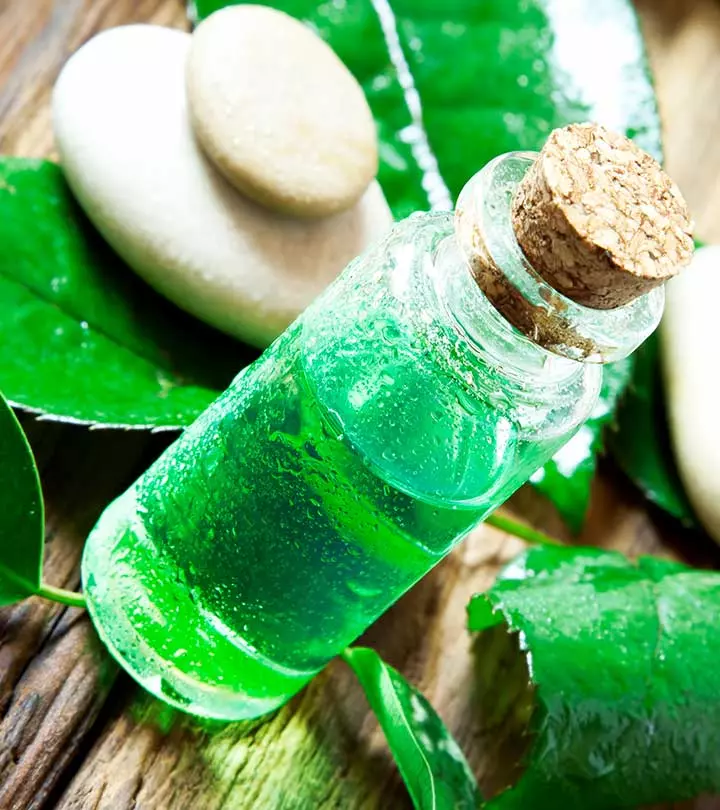
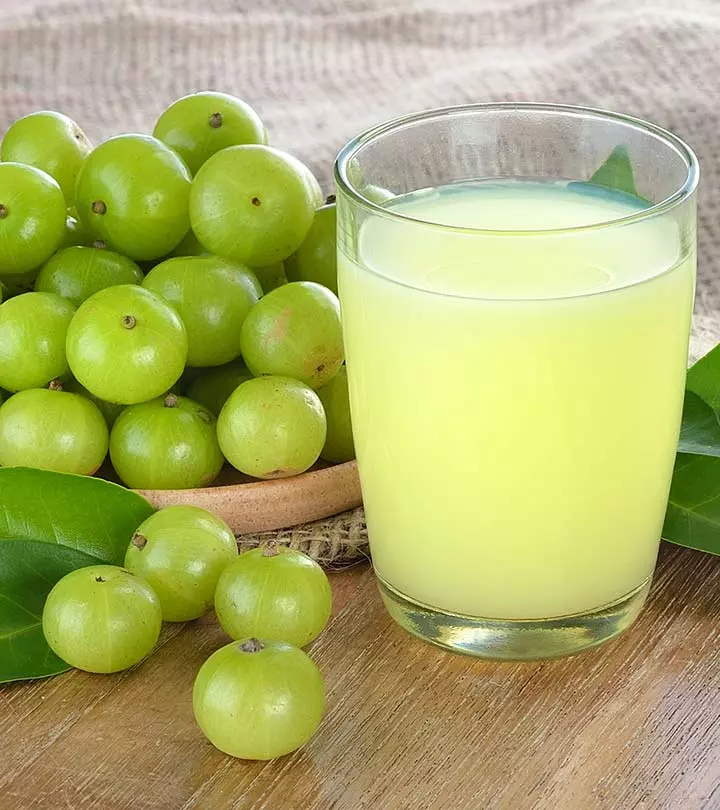
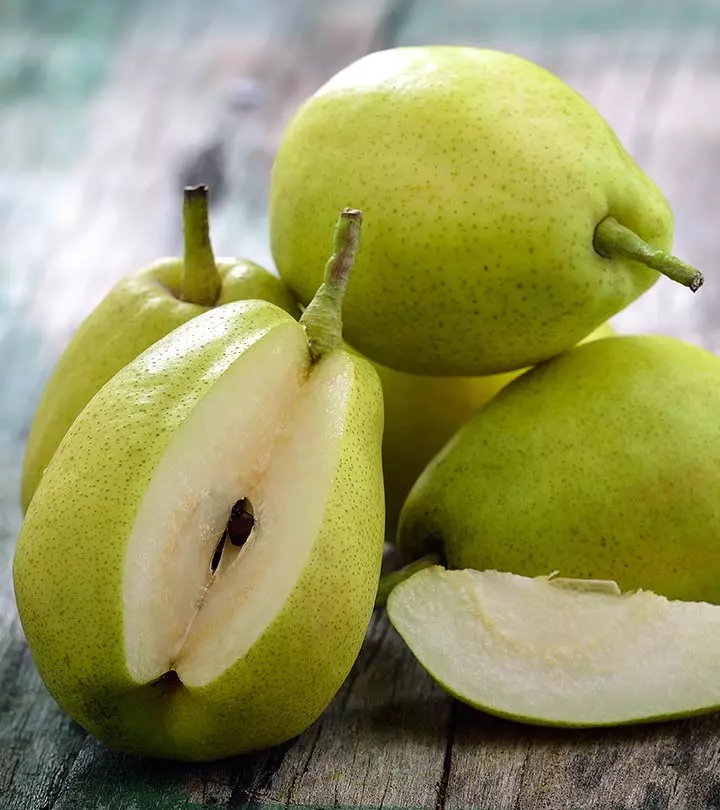
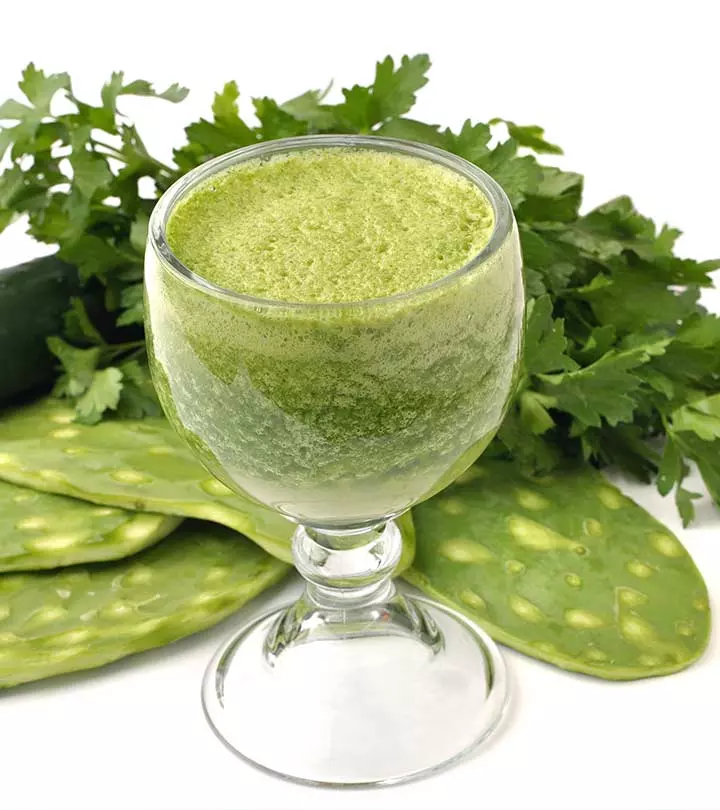
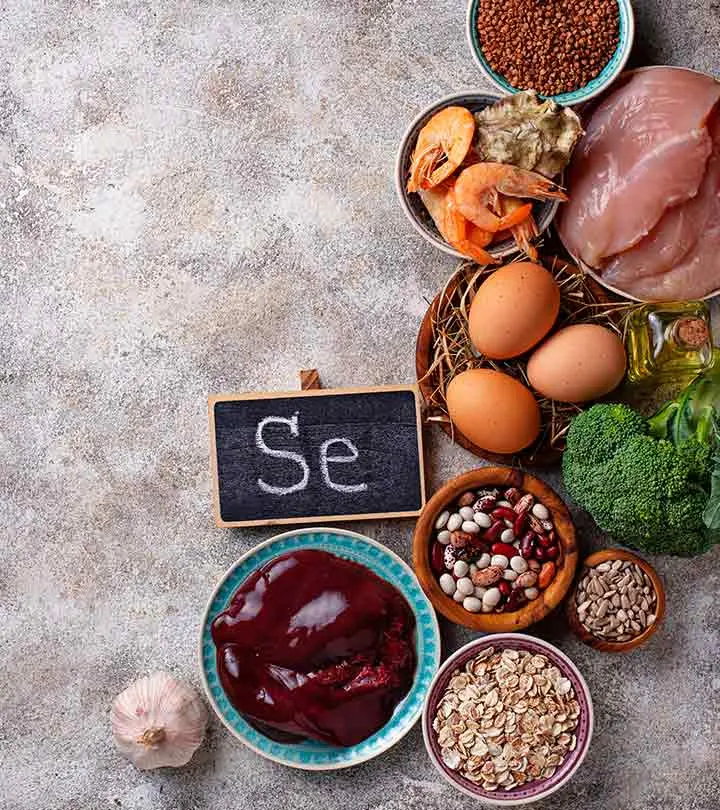
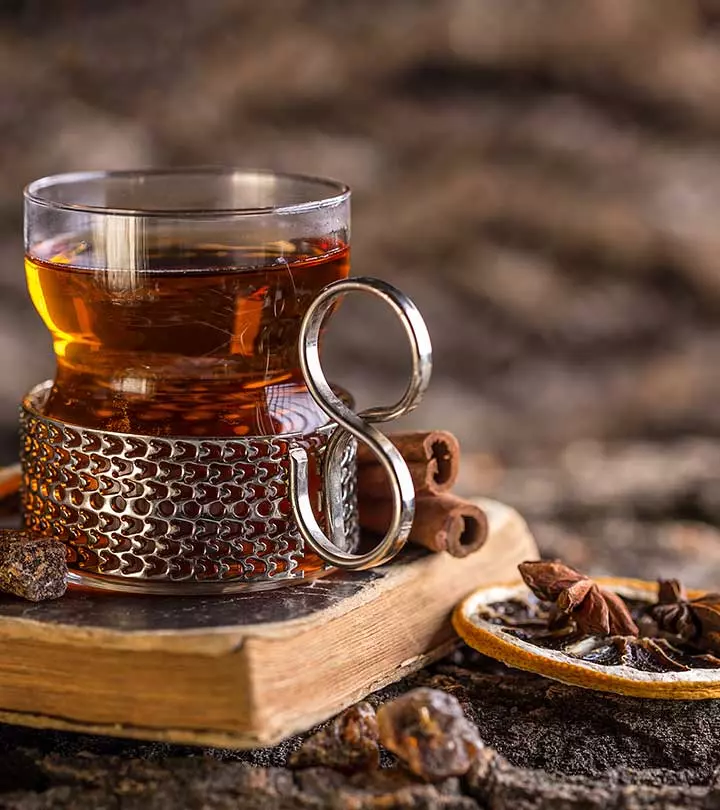
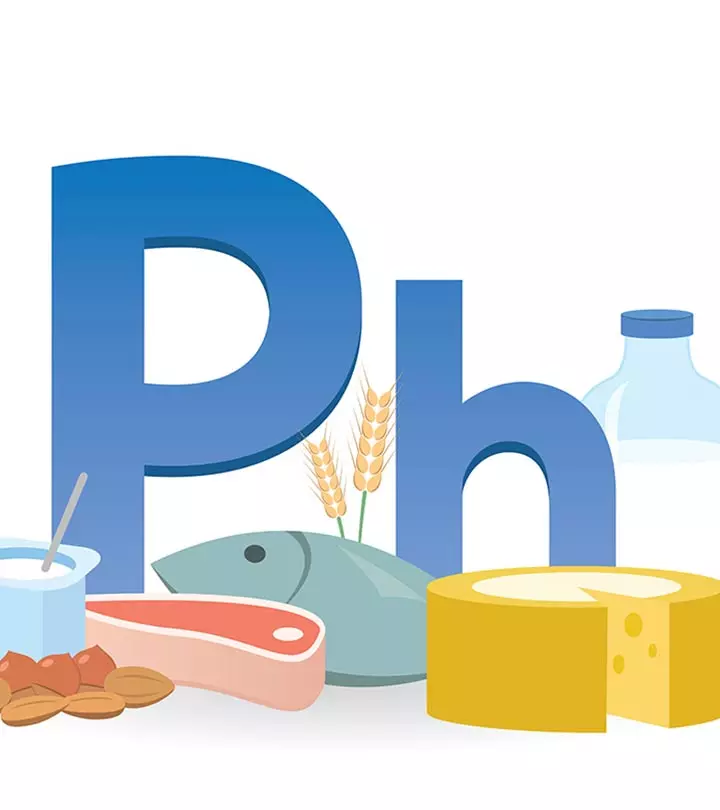
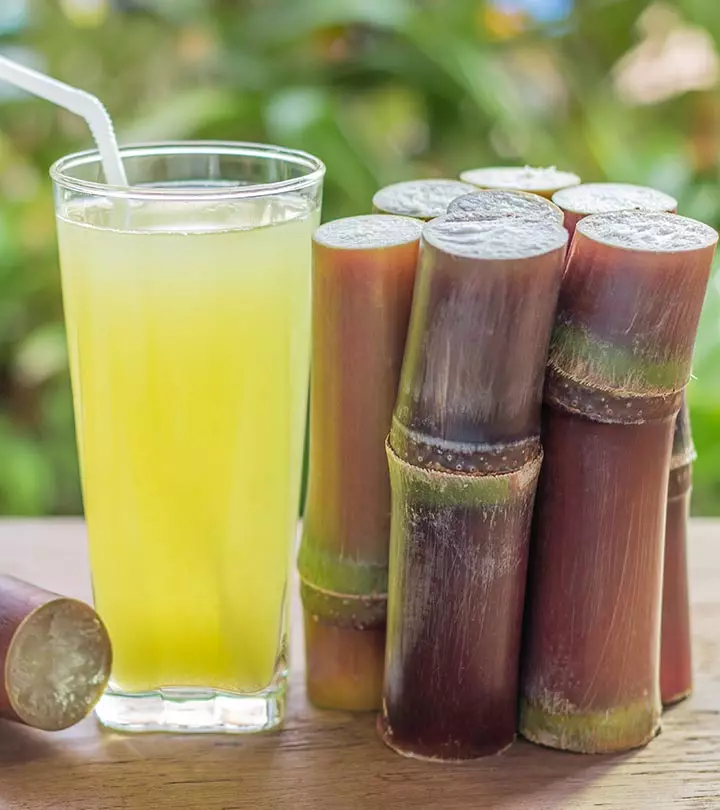
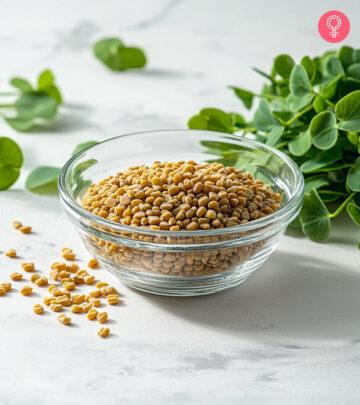

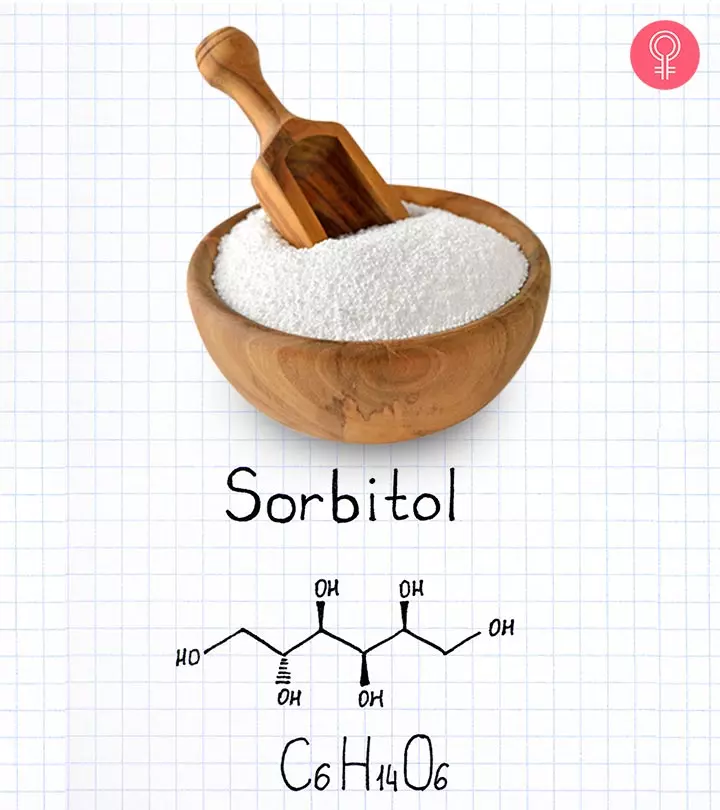
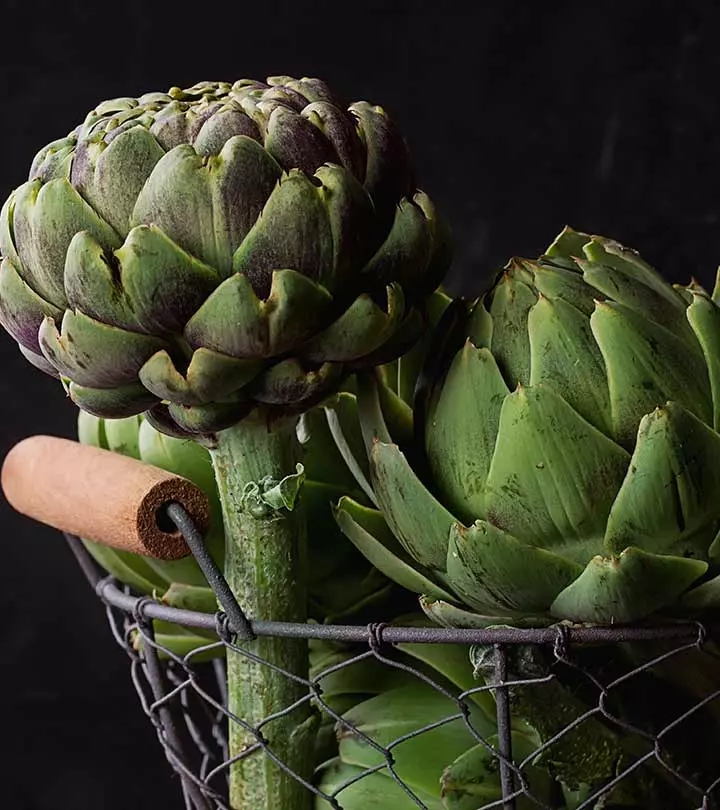


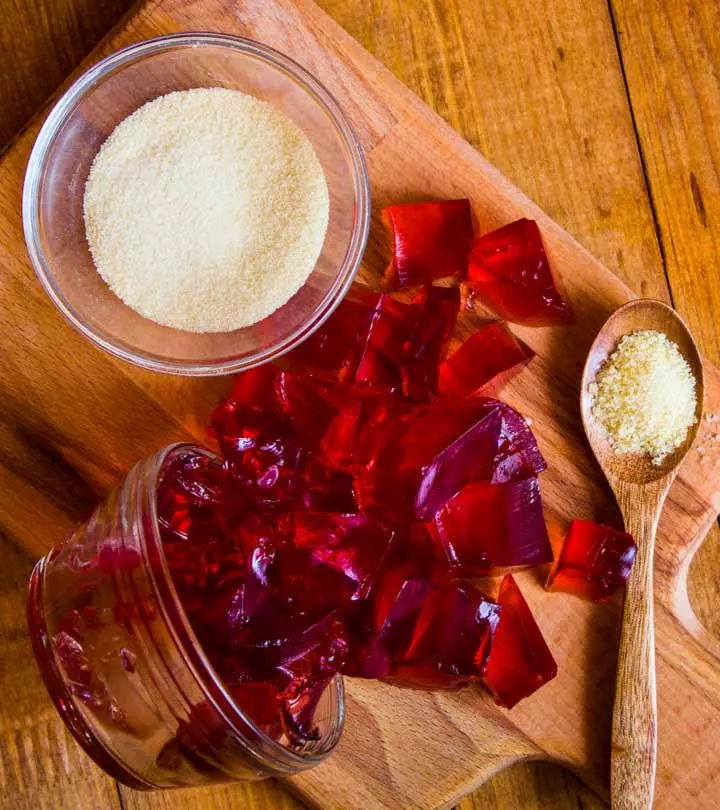
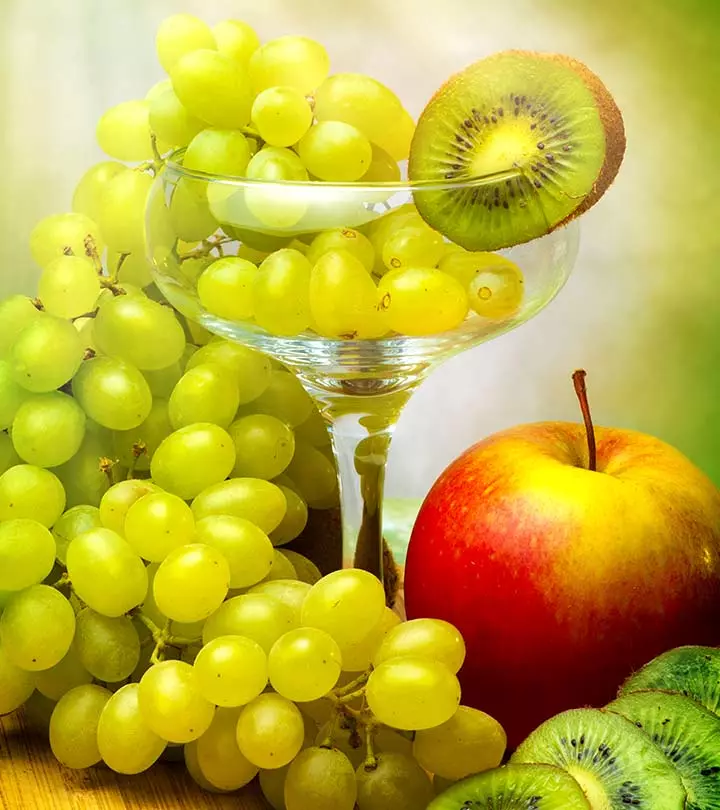
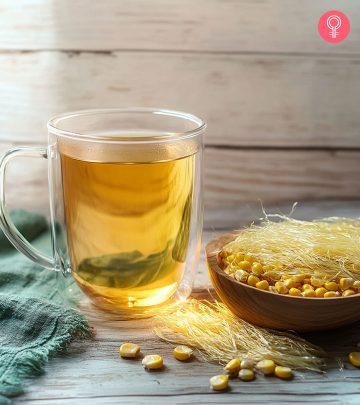
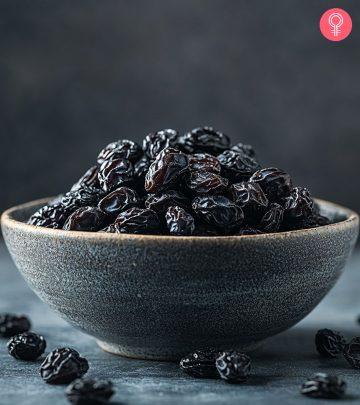
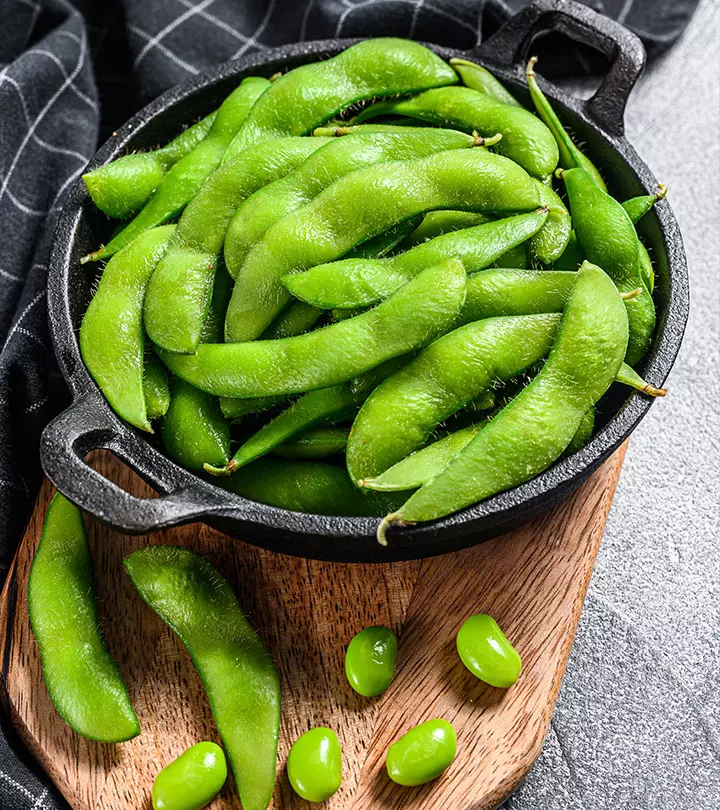

Community Experiences
Join the conversation and become a part of our empowering community! Share your stories, experiences, and insights to connect with other beauty, lifestyle, and health enthusiasts.